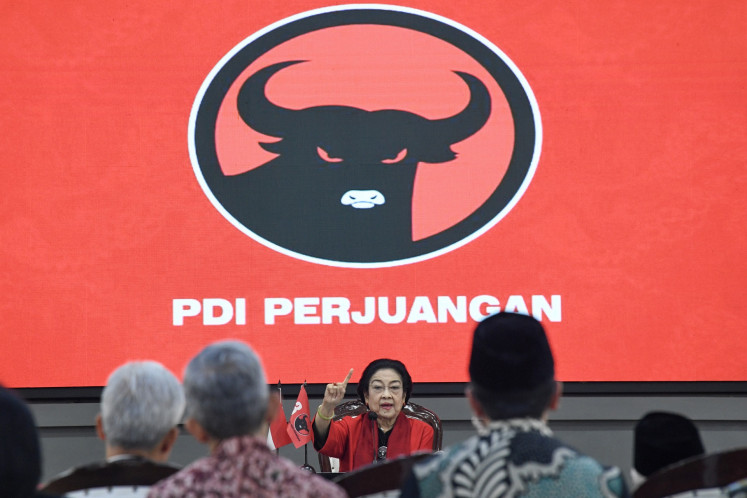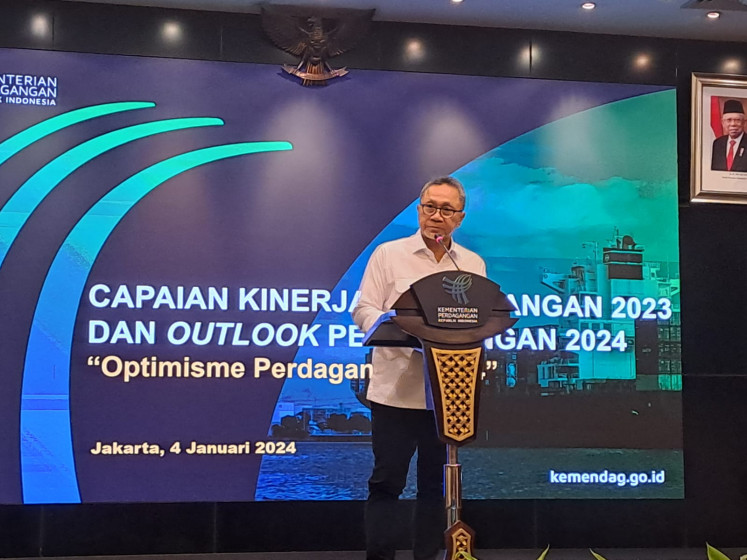Challenges of Jakarta's replacement
Why should we build a new capital city for Indonesia? No one is better to answer the question than President Joko “Jokowi” Widodo
Change Size

Why should we build a new capital city for Indonesia? No one is better to answer the question than President Joko “Jokowi” Widodo.
Frankly speaking, it is neither a bad nor a good idea. It is a matter of perspective. However, common sense says the relocation is about to better serve the diverse populations, provinces and resources of the country with a strategic geographic location.
Jakarta is no longer economically and environmentally appropriate and supportive for the capital city. Indeed Jakarta’s infrastructure and public facilities are not conducive to an efficient and reliable city in terms of environmentally friendly urbanism.
So to what extent can planning and design ensure that the new capital city is effective for transforming and improving Indonesia? We have valuable lessons from Brasilia in Brazil and Putrajaya in Malaysia. The core idea of moving the capitals of the two countries was not something apart from the relocation of government quarters.
In the cases of Brasilia and Putrajaya, both cities serve as government quarters in the day but are dead at night. Putrajaya is not a self-sufficient monad but an integrated part of a regional network of Kuala Lumpur, Cyberjaya, Bandar Teknologi Kajang, Sepang, Kuala Lumpur International Airport and Port Klang.
The proposed capital of Indonesia is seated between the regency of North Penajam Paser and the regency of Kutai Kartanegara in East Kalimantan. This location geographically faces the water in the east and the rainforest in the west. It is between the two sociopolitically and economically established centers: Balikpapan and Samarinda.
Economically speaking, the location was a site for mining coal. The geological condition is dominated by a layer of medium sandstone and black claystone with overlapping quartz sandstone sediments. Some areas with steep slopes are prone to landslides during heavy monsoons.
The real challenge for a newly established urbanism like the new capital is the huge amount of investment needed for a functional structure plan for human to engender creative economic activities beyond the businesses of natural resources. The new capital should not be a symbolic or monumental urban center but an economically attractive center with a well-connected network of creative industries for collaboration, production and distribution.
Based on the published plan, however, the schematic design of the future capital is highly symbolic, delineating the literal pentagram of the state ideology Pancasila. The radial structure of the main street system dominates the layout of infrastructure and building systems.
As a whole, the city’s master plan is likely planned and designed by those who never learned much about the misery and the socially alienated populations of modern cities because of the automobile-oriented design and poorly diverse public realms. Architecturally speaking, the proposed capital is not geographically self-growing. The land use is planned with myopic and sterile government activities. There is nothing to expect beyond a workplace for white-collar society in the middle of the Kalimantan forest.
Therefore it is like a company town founded and sustained by taxes, for a large-scale workplace and housing for government officials.
The master plan and design of the proposed capital look distant from the populist inspiring personality of Jokowi. Its strong geometrical configuration dictates formal activities with military parades, rallies and ceremonies. The architecturally created open spaces show how flag-raising ceremonies and rituals play an important role in the government clusters.
It is difficult to understand why such a master plan is presentable for a democratic Indonesia. Of course, the new capital is not like Palmanova in Northern Italy, established by the Venetian Republic in 1593 and designed by Vincenzo Scamozzi. The new Indonesian capital is not designed for defense with the European Middle Age and Renaissance era arsenals with heavily guarded gates.
Moreover, the compactness of the pentagon city will not accommodate more than 500,000 to 600,000 people within 50 years of its establishment while density could be estimated for 3,200 to 3,500 people per square kilometer. On paper, the narrative of the master plan is without a demographic plot.
If this capital is developed in the middle of the jungle, the obvious issue of its functional urbanism is the inefficiency of investment in transportation and construction; the high costs in mobilizing building materials and labor to build and to live there during construction. The new development will not able to get the benefit of adjacent places.
Only a strong political will is able to realize this utopian city regardless of the high cost; this was the case for Brasilia but not for Putrajaya. Being socioeconomically isolated from regional economic generators does not make the new capital a prospectively engendering center for new opportunities.
Investment in public infrastructure and facilities for the new capital should be useful for nearby regional centers. The newly developed city must be integrated in the whole regional development. The international airport, the environmentally friendly power plants, the seaport and the MRT system should be economically integrated with the existing towns and cities. In other words, the location of the new capital should add economic and social value to the nearby regions.
Last but not least, the newly proposed capital city design lacks an indigenous identity. Instead, the design replicates the historical mistake of Jakarta, where the seat of the ruler and religious and public buildings surrounding the public square are its only monumental edifices.
Streets in the indigenous context are public realms without car traffic. In other words, a new interpretation of local urbanism, in which pedestrian areas are dominant while public transit should be underground or in a limited portion of open domains, is challenging.
Contemporary urban planners come to realize that “no plan is a good plan”. This is not surprising. What is important for urban development today is to build adaptive structures with the architecturally guiding principle of human scale for safe-healthy-sustainable urbanism.
The key principles include creating liveable pedestrian and mixed-use places for activities that work for socioeconomic growth. The spatial structure of the city is necessary to ensure the diversity of subdivisions and districts with unique architectural and socioeconomic characteristics.
“No plan” means less control over the form but it provides the land with various options of development.









